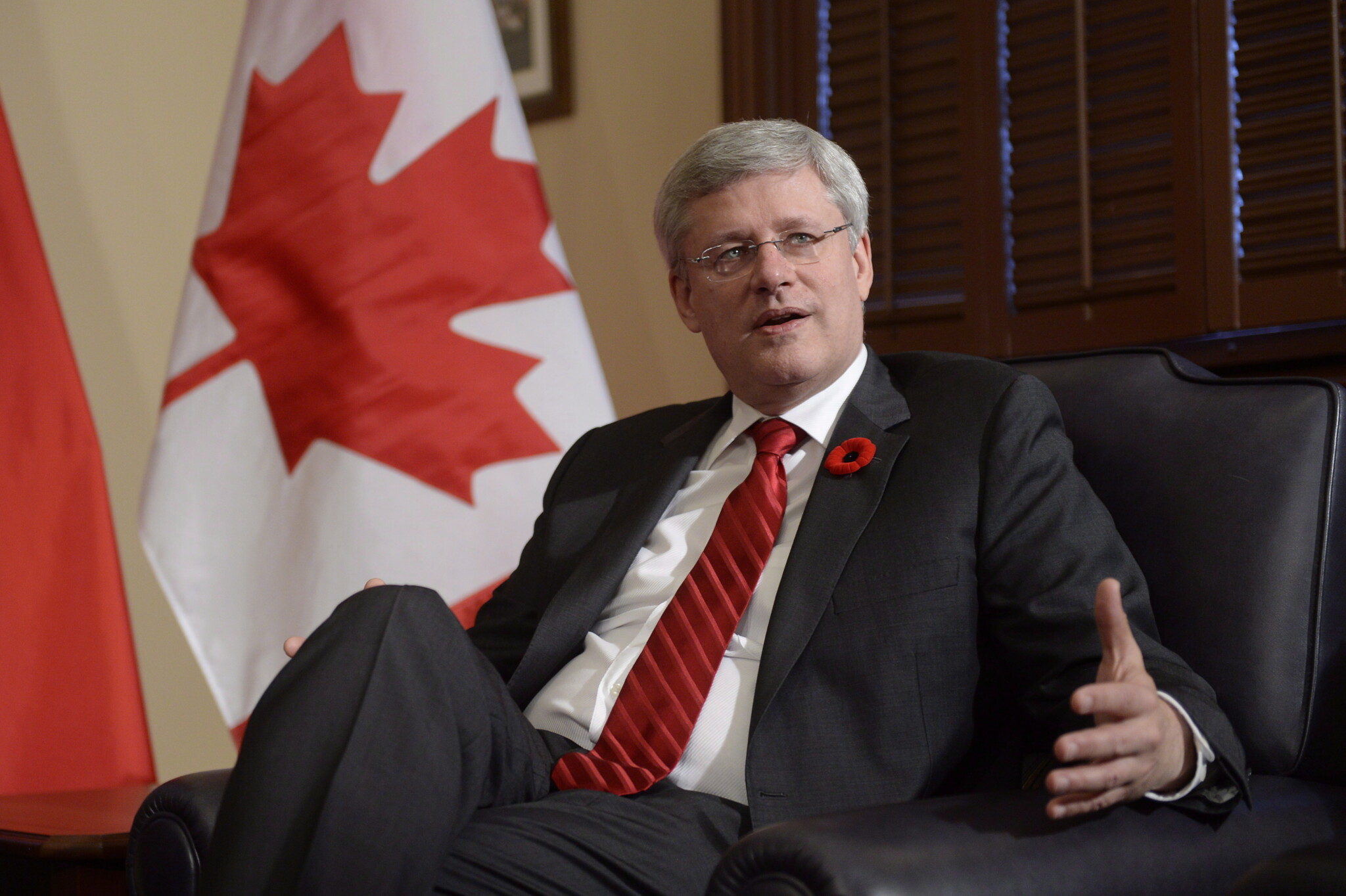DeepDives is a bi-weekly essay series exploring key issues related to the economy. The goal of the series is to provide Hub readers with original analysis of the economic trends and ideas that are shaping this high-stakes moment for Canadian productivity, prosperity, and economic well-being. The series features the writing of leading academics, area experts, and policy practitioners.
Against my better judgment, I opened LinkedIn a few weeks ago—the most insipid of social media platforms. Seconds into the usual sludge, something cut through. Jonathan Lisus, a Toronto commercial litigator I have worked with before and respect enormously, was posting about his latest win: a $550-million judgment against the federal government.
I was happy for him. Lisus is as deft in court as he is courteous out of it. It is considered poor form—positively common—to speak of money, but with half a billion dollars at stake, Lisus more than earns the comma in his hourly rate.
Curious, I clicked his post. His summary read:
“In 2007, Industry Canada induced the plaintiffs to capitalize a new wireless carrier and build out a network to compete against incumbents, with ‘specific representations intentionally and expressly made’ that their spectrum licences could be transferred after five years. In 2013, Canada broke its promise by ‘capriciously’ removing the right to transfer the licence and then interfered in a CCAA sales process,” Lisus wrote.
Most people’s eyes would glaze over. Mine did not. ‘Spectrum licences’ are, for me, a kind of Proustian trigger, instantly carrying me back to my twenties in Stephen Harper’s PMO.
The spectrum wars
Back then, Prime Minister Harper’s long-stated policy was to increase wireless competition by ensuring a viable fourth national carrier in every market. By the time I became involved, around 2012, that policy had been settled. Some of his top advisers had previously argued the opposite to him: that Canada’s demographic geography favoured three carriers, and that engineering a fourth would effectively require consumers to underwrite the cost of four facilities-based national networks. It was better, they had argued, for the major operators to put capital into technology—bandwidth and speed—rather than duplicative coverage. They pointed to more densely populated Western countries, where less-regulated markets supported fewer national players, and concluded that Canada should not aim for more. Their view was sincere, but it had not succeeded in persuading the prime minister. By the time I entered the file, all his senior advisers understood our role as not to re-litigate the policy but to advise faithfully on how best to give it effect, and it was within that constraint that we expressed our differences of opinion about the path forward. That said, we also knew that the incumbents had deep links in the public service as well as the government caucus, which meant the federal government was never entirely cohesive.
The state of play was grim. The previous spectrum auction, trumpeted publicly as a success, had in fact been a failure: instead of enabling a strong fourth player, the set-aside spectrum had been divided among marginal operators—a fourth, fifth, and sixth—each struggling to survive. We concluded that the only viable path forward was to consolidate those earlier set-asides under a single entity, which would also need to be the recipient of future spectrum (though we disagreed on how, and to whom, that should best be allocated). Certainly we all accepted that it was unthinkable for this spectrum to revert to the incumbents: that would have undone everything the government had sought to achieve. Though never the government’s explicit intention, this necessarily meant impairing the value of the existing set-asides so that they could end up in the hands of whichever firm might emerge as the genuine fourth player. Those were just the commercial realities; if you will the ends, you will the means.
If that seemed unduly harsh, one had to recall the nature of the market. These investors were millionaires investing millions belonging to other millionaires, all with only the most tenuous connection to ordinary Canadians. The people who mattered were left wondering why their phone bills kept rising. In a heavily regulated industry, they had gambled, and their losses were the natural corollary of the outsized rewards awaiting whoever emerged as the fourth carrier.

Canadian Prime Minister Stephen Harper in his office Friday October 31, 2014 in Ottawa, Canada. Adrian Wyld/The Canadian Press.
And even for that eventual winner, the terrain was hostile. The Canadian telecom sector was a bear pit: government departments long captured by the big-telco lobbyists; the incumbents owning television stations that shaped public debate; the publisher of the Toronto Star displaying greater class solidarity with his CEO peers than fidelity to the Atkinson Principles; and the ever-present, if never spoken aloud, but certainly always understood, threat that incumbent work crews might “accidentally” damage rival equipment when maintaining shared towers. To this, one could add the incumbents’ Canadians-when-convenient insistence on being seen as national champions defending the country from American rivals; yet they stood ready to be acquired by those very American rivals, provided they arrived as owners, not competitors.
The file had everything: a cabinet shuffle and a new Industry minister, a speech from the throne reset, a clerk on his way out, and the chance to replace a CRTC chair. It was also a dog’s breakfast of rivalries and drama: a running feud with Bell’s George Cope; the Rogers soap opera and the company’s — or should I say family’s — numerous purported emissaries; and Newton Glassman of Catalyst Capital, holding Mobilicity’s first-lien debt, doing a credible Gordon Gekko in my office.
“Fourth player” investors of varying solvency elbowed for position. Quebecor’s Pierre Karl Péladeau, in a leg cast from a ski accident, had laboured up two flights in PMO to declare to us that he would be the fourth player, then limped back down. Since Vimpelcom owned part of Wind, there were security briefings on their murky ownership; these required calls to Amsterdam lawyers with Eastern-bloc burrs who never set foot in North America.
Against that backdrop, I had been quietly urging Verizon, which was being advised by Barclays, to break the telecom oligopoly’s grip on customers. I was convinced that to compete with the incumbents, any future fourth player would need both deep pockets and operating expertise, and I saw no compelling reason why it should begin as the weakest; indeed, a lightly capitalised domestic entrant could never hope to survive in such an environment, but would inevitably sell itself to an incumbent, a prospect that may well have been its ulterior motive all along.
I read deeply in the economic literature on auction design; met with government critic Michael Geist, whose critiques of Industry Canada I frequently found myself agreeing with; and came to regard Charles King of Shaw—now sadly deceased—and his boss in Toronto as the two on this file who consistently conducted themselves with the highest personal and professional integrity. I was even encouraged to learn that my preferred policy solution, cancelling future auctions altogether and instead holding “beauty contests” to allocate spectrum, would have had virtually no effect on deficit reduction, since public-sector accounting standards require auction proceeds to be deferred and recognised over the licence term.
Cast as a villain
With that old world suddenly back in view, I put the kettle on and settled in for a long read of the decision. At first, I was simply disappointed to see Lisus—formidably—on the other side from where I had once stood in government. Then I saw my name. Repeatedly. And never flatteringly:
According to Justice Osborne: “Senior political personnel…strategically leaked a story to the Globe and Mail…manufactured and planted story…purported quotes from ‘unnamed government sources’…threaten TELUS…far from ordinary course…highly irregular…Alykhan Velshi himself came up with the idea.”
Finding one’s name in a judgment gives pause; seeing it tied to a material factual finding, more still. But a court is bound to decide on the record before it—and, as will later emerge, that record was incomplete. What interests me here is the shape of what was missing.
The missing pages
First: when the Crown faces a half-billion-dollar claim, it must speak to the principal protagonists early and directly. That is not courtesy; it is duty. I first learned of this case—one that makes material factual findings—only last week, after judgment, and only because I happened to log into LinkedIn. Discovery best practice would have been for DOJ counsel to identify those with relevant knowledge, notify them, preserve their evidence, and seek production. That did not occur here.
After reading the decision, I decided to conduct a search of my records. Within five minutes of searching my own files last week, I found dozens of contemporaneous documents: direct, relevant evidence on central issues, including the so-called “manufactured” story which, later in the ruling, was said to form part of a campaign of unlawful conduct on the part of the government. More than a decade later, these business records are still preserved in one of my email inboxes; because DOJ counsel never contacted me or asked me to turn over records in my possession, these emails never reached them, and therefore I cannot see how they reached plaintiff’s counsel, or the court.
These records are by no means exculpatory; if anything, they might have given the court fresh lines for its judgment, so DOJ counsel’s reflex of never reaching further than the nearest filing cabinet proved a rare favour to the Crown, though it still left the court with a record bad enough, if not quite complete.
Second: I do not quarrel with the court’s factual findings, but I am struck by how scandalised it seemed. It bore the mark of déformation professionnelle: a judge with no grounding in political communications, relying on DOJ’s depiction of a Globe and Mail briefing as “unusual,” concluded it was aberrant. For senior political staff, this is the job: shaping the frame; slipping a reporter a lead, seeding a detail, or embedding a signal meant for those attuned to catch it. It is routine across governments and corporations alike: offering a fact or angle that will land where it needs to and trusting the intended audience will understand the message. The only thing that might strike a seasoned media-relations professional as unusual was how well-sourced the Globe and Mail story was, involving four senior sources—two in PMO, two in a minister’s office—compared with the two, or even one, that often suffices for other papers. The court’s reaction was rather like sending back the bottle, then declaring the Bollinger too rich: it is one thing to dislike it, quite another to fault it for the very thing that defines it; DOJ counsel’s failure to explain as much allowed the court to treat a routine practice it disapproved of as though it were exceptional.

A person uses a cell phone in Ottawa on Monday, July 18, 2022. Sean Kilpatrick/The Canadian Press.
In truth, these sorts of media stories and how they originate are so familiar to anyone who has worked in the senior levels of government that it has been a standing target for satire for decades; Yes, Prime Minister captured it perfectly:
Prime Minister: I think the public has a right to know this.
Sir Humphrey: It is a top-secret document…On the other hand, the service chiefs are notorious for their indiscretion. It could well find its way into the hands of some irresponsible journalist.
Prime Minister: Quite. Or, several irresponsible journalists. Of course, I could never be a party to anything like that.
Sir Humphrey: Prime Minister, I’ll go and attend to the plumbing.
[Sir Humphrey exits]
Bernard: When’s he going to leak it?
PM: Did I ask for a leak, Bernard? I occasionally have confidential press briefings, but I have never leaked.
Bernard: Oh, that’s another of those irregular verbs: I give confidential briefings, you leak, he’s being charged under section 2a of the Official Secrets Act.
Third: the court seemed surprised that the PMO and the Industry minister’s office did not clear a confidential media briefing beforehand with Industry Canada’s three spectrum auction experts.
According to Justice Osborne: “One might have hoped that the article could be explained as a miscommunication, or a misinterpretation by the reporter of the position of the Government. However, as noted above, it was precisely accurate, and that was because the Government supplied the quotes directly. And it had supplied them without the involvement or even the knowledge of the very Government officials who were responsible for the auctions and related policies.”
To my mind, this again reflects a basic misreading of how the federal government works: the kind of category error that arises when technical expertise is mistaken for political authority. A judge is bound to decide on the record before him, and one cannot fault the court if, on this record, as framed by DOJ counsel, key witnesses were absent and relevant documents were not in evidence. An incomplete record inevitably distorts context; conduct that is commonplace can, in isolation, appear anomalous or even egregious.
In the Canadian government, authority over political communications rests with ministers and their political staff, particularly when the subject is signalling the government’s future policy direction rather than the technicalities of existing rules. The three spectrum-auction experts—one senior (an ADM) and two mid-level (a senior director and a director)—who were excluded from the confidential media briefing on options under consideration were public-service specialists in auction design under the framework then in force. Their mandate was to execute a status quo policy in which the government had already lost confidence and which it was actively considering changing. On the question of how such a change might be shaped, they were hardly the only sources of expertise in government.
In fact, as the custodians of the existing processes, they would have been expected to guard them the most zealously. The Globe and Mail briefing took place amid parallel deliberations, separate from the process they were part of, on a potential wholesale policy reset, with multiple options and competing advice in play. Their contribution, while valuable, was narrowly technical: from within their spectrum-silo in Industry Canada, they were supporting an inherently political policy process, led by elected officials and their senior advisers, tasked with delivering on a longstanding prime-ministerial commitment. In such a process, political communications lie outside both their remit and their responsibility.
Fourth: notwithstanding all this, the federal government still deserved to lose, and not merely because DOJ counsel failed to interview key actors or collect relevant records, serious lapses though those are. The Crown’s treatment of the plaintiffs was egregious and caused substantial, foreseeable economic loss. Once one accepts, as the court did and as one must, that a duty of care had been created in the early years of the government, the breach is inescapable. By the time I came to the file, senior and mid-level public servants had already spent years engaged in conduct that repeatedly misled the plaintiffs and directly conflicted with the government’s actual intentions. Much of what the court unearthed—including private assurances given by mid-level public servants, one captured on tape—was entirely new to me.
The prime minister undermined
My suspicions from more than a decade ago, then unproven, have now been confirmed: Prime Minister Harper’s public commitment to a viable fourth wireless provider was being quietly undermined by his own public service, not only because, early on, they had designed a spectrum auction policy they knew would not achieve the ends he sought, but, worse still, because, in order to conceal that initial misjudgement, they spent the years that followed frustrating every attempt at course correction; misleading private-sector interlocutors about the government’s true plans; and inducing investors, including the plaintiffs, to continue committing capital on the strength of promises they knew to be false.
In the federal government, officials quietly sabotaging a prime minister’s policy is as routine as ministerial staff holding confidential press briefings—both are simply part of how the place works: the stage remains, the actors change, the tragedy repeats. The gaps in the record spared the Crown from the full measure of liability it deserved; the breach, the harm, and the judgment stand.










